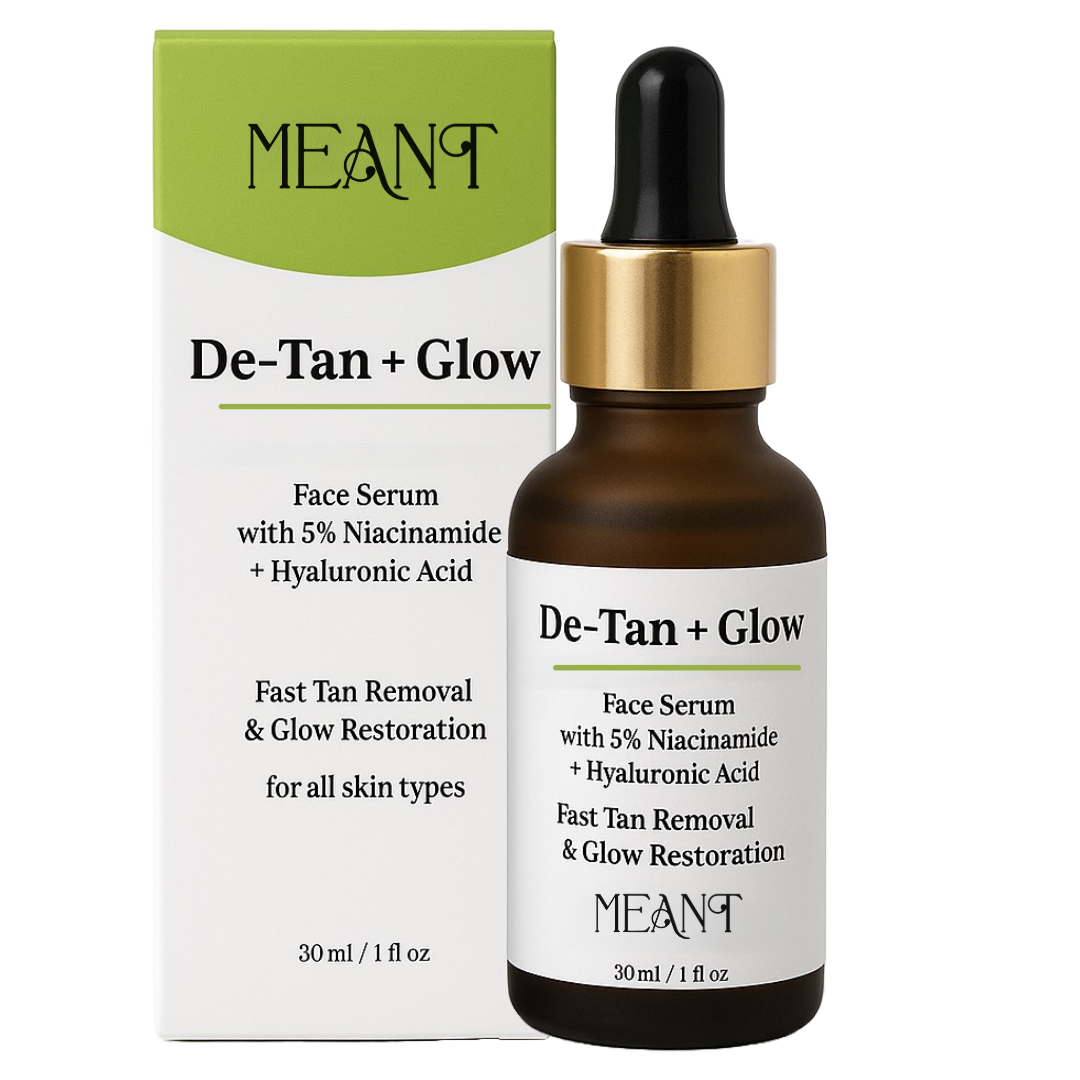
The Definitive Face Serum Guide: How to Choose the Right Serum for Your Skin
What is a face serum and why use one?
A face serum is a treatment product with a high concentration of active ingredients in a lightweight base (usually water, glycerin, or light emollients). Unlike moisturizers that lock in hydration, serums are formulated to deliver targeted actives — think hyaluronic acid for hydration, niacinamide for tone and barrier repair, or proprietary reflective/glow tech for instant radiance. Because of their thinner texture and higher active levels they penetrate more easily and act faster than heavier creams. Byrdie
Why add a serum?
- Target specific problems (pigmentation, dehydration, texture, fine lines).
- Boost results from your core routine without heavy layering.
- Improve the performance of downstream products (moisturizers, sunscreen).
How serums actually work — delivery, molecule size, and tech
Two science points matter most for serum effectiveness:
- Molecular size matters for penetration. Ingredients like hyaluronic acid show different effects depending on molecular weight: low-molecular-weight HA penetrates more deeply; high-molecular-weight HA hydrates the surface. Formulations that combine multiple HA weights provide both immediate surface plumpness and deeper hydration. Clinical data and product testing consistently favor multi-weight HA blends for comprehensive results. PMC
- Encapsulation & delivery systems increase bioavailability. Liposomes and other encapsulation systems protect sensitive actives from degradation and help deliver them into target layers of the skin — a technique used across advanced serums to make ingredients work harder and last longer. This is why “advanced hydration technology” or “reflective encapsulated glow complexes” are worth calling out on product pages. PMC
How to choose a serum for your skin type & concerns
- Dry / Dehydrated skin: Look for multi-weight hyaluronic acid, glycerin, and occlusive pairing (use a moisturizer after serum). → MEANT Hydrating Serum. (See clinical HA benefits) PMC
- Oily / Combination skin: Lightweight serums with humectants and barrier helpers (niacinamide, low-weight HA). Avoid heavy oils in the AM.→ MEANT Brightening Serum.
- Pigmentation / Tan: Niacinamide, mild AHAs, antioxidant support; always pair with daily SPF. → MEANT De-Tan + Glow. PMC
- Glass skin / instant glow: Light-diffusing serums or reflective tech with hydrating base to avoid greasiness. → MEANT Lumi Glo.
- Sensitive skin: Alcohol-free, fragrance-free serums; introduce slowly and patch test.
Key serum categories (which MEANT serum maps where)
- Hydrating Serums — heavy on hyaluronic acid (multi-weight HA) and humectants for plumpness. → MEANT Hydrating Face Serum (Advanced Hydration Technology).
- De-Tan / Tone-Correcting Serums — niacinamide, mild AHAs/BHAs, antioxidants to reduce visible tan and even tone. → MEANT De-Tan + Glow.
- Glass/Reflective Glow Serums — lightweight films, light-diffusing/reflection technology for instant luminous finish. → MEANT Lumi Glo (Korean Glass Skin Serum).
- Brightening & Corrective Serums — vitamin C derivatives, alpha arbutin, kojic/niacinamide blends. → MEANT Brightening Serum
Correct order of application to avoid pilling & irritation
Rule of thumb: thinnest → thickest (low viscosity → high viscosity) and water-based → oil-based. Wait 30–90 seconds between thin serums and heavier layers to let them absorb — dermatologists recommend a short pause to reduce pilling and ensure each active settles. For example: Cleanse → Toner → Water-based serum (e.g., Hydrating Serum) → Treatment serum (e.g., De-Tan + Glow) → Lumi Glo (if you want an instant finish) → Moisturizer → SPF (AM). Cleveland Clinic
Realistic timelines: when you’ll see results
- Hydration / plumping: often immediate (minutes to hours), with sustained improvement in 1–2 weeks.
- Tone / pigmentation: typically, 3–4 weeks depending on severity and consistency.
- Texture / fine lines: noticeable improvement in 5–6 weeks with consistent use.
Practical tips to reduce pilling & irritation
- Apply 2–3 drops per serum to avoid overloading the skin.
- Allow a short dry time between products (20-30 seconds).
- If you experience pilling, reduce the number of layers or wait longer between applications.
- Avoid mixing high-acid treatments (strong AHAs/BHAs) in the same routine as strong retinoids without guidance.
Frequently Asked Questions About Face Serums
Q1: Can I use more than one serum at the same time?
Yes, you can layer serums — for example, a hydrating hyaluronic acid serum followed by a vitamin C serum. The key is to apply from lightest to heaviest texture and avoid mixing conflicting actives (like retinol + vitamin C together in the same routine).
Q2: How long does it take to see results from a serum?
Most serums show visible improvements in 3–4 weeks with consistent use, depending on the active ingredients and your skin concerns.
Q3: Are serums suitable for sensitive skin?
Yes, but choose gentle formulations preferably fragrance-free (hydrating or soothing serums with hyaluronic acid, niacinamide, or rose water) serums and do a patch test before full application.
Q4: Do I still need moisturizer if I use a serum?
Yes. Serums deliver actives deep into the skin, but moisturizers lock in hydration and create a protective barrier. They work best together.
Q5: Can men use face serums too?
Absolutely. Serums are gender-neutral and highly effective for men dealing with oiliness, post-shave irritation, pigmentation, or dullness.
Which MEANT serum is right for you?
- MEANT Brightening Face Serum — “20X Powerful formula with brightening actives for toned, luminous skin.” → Shop Brightening Serum
- MEANT Hydrating Face Serum — “Advanced Hydration Tech for plump, dewy skin.” → Shop Hydrating Serum
- MEANT De-Tan + Glow — “Targeted de-tan action for even tone and restored radiance.” → Shop De-Tan + Glow Serum
- MEANT Lumi Glo — “Korean glass-skin serum for instant reflective glow and makeup-ready finish.” → Shop Lumi Glo Serum

